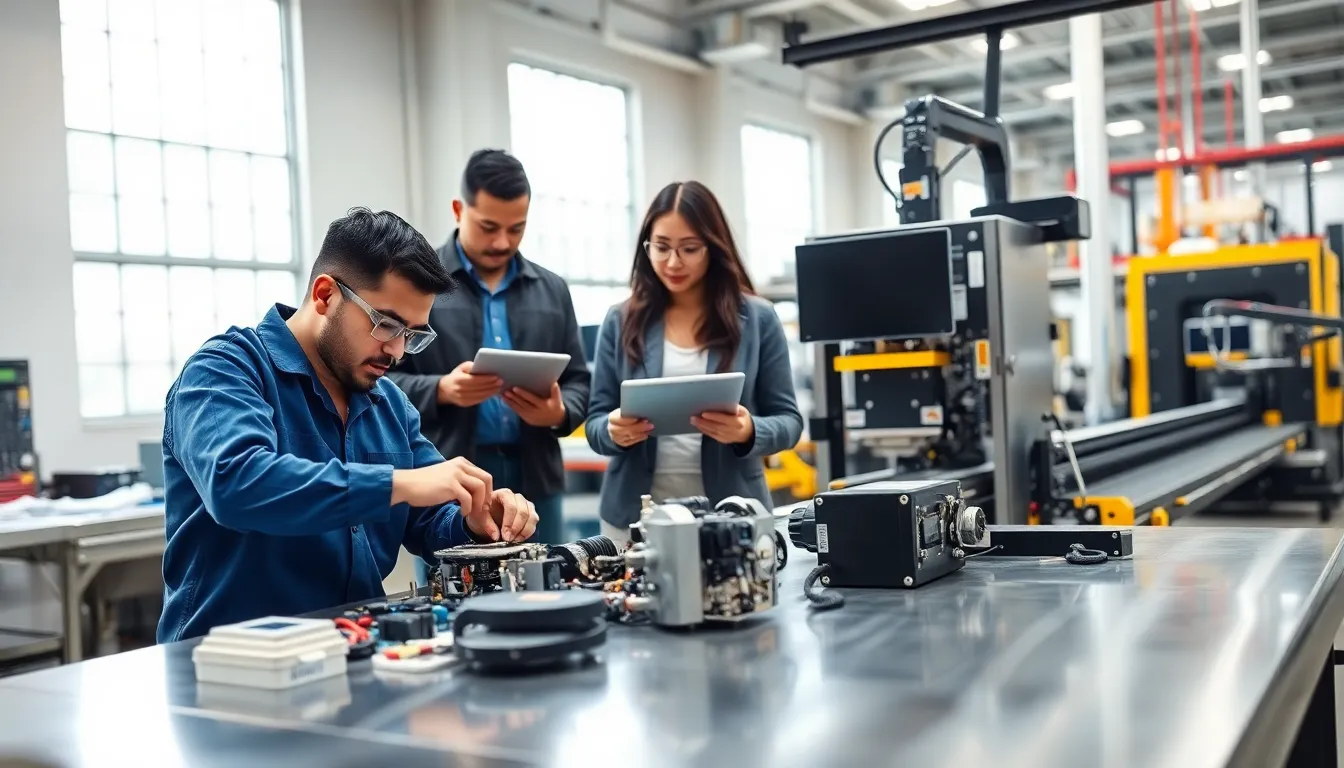Table of Contents
ToggleHave you ever looked at a new piece of furniture and thought, “I can definitely figure this out, how hard can it be?” Fast forward to you wrestling with a box of screws and an instruction manual that might as well be in ancient hieroglyphics. Well, fear not. Product assembly isn’t as daunting as it seems. This comprehensive guide will steer you through the ins and outs of product assembly, making it feel less like a wrestling match and more like a well-choreographed dance.
Understanding Product Assembly

Product assembly refers to the process of putting together various components to create a finished product. This could involve anything from assembling furniture and machinery to putting together electronic devices. Understanding this concept is crucial for improving manufacturing efficiency and ensuring high-quality output.
Assembly can be manual, automated, or a mix of both. Each method has its pros and cons, depending on the scale, complexity, and nature of the product. Manual assembly allows for flexibility and quality control, while automated assembly enhances speed and consistency. Notably, distinguishing between these methods is essential for industries aiming for productivity and efficiency.
Types of Product Assembly
When discussing product assembly, one can categorize it into several types:
Manual Assembly
This is where the human touch makes the magic happen. Workers use hand tools and their skills to assemble products, ensuring each piece fits perfectly. While it can be slower than automated processes, it often yields higher quality.
Automated Assembly
In contrast, automated assembly involves machines and robotics taking on the bulk of the work. This method significantly speeds up production and can handle tasks with great precision, reducing human error.
Semi-Automated Assembly
The best of both worlds, semi-automated assembly combines human labor with machines. Workers may load parts or perform quality checks while machines handle repetitive tasks. This hybrid model often strikes a balance between efficiency and quality.
The Product Assembly Process
The product assembly process typically follows a series of well-defined steps:
- Planning: This initial phase involves deciding the best methods and tools to use. It’s crucial for successful assembly.
- Preparation of Components: Before assembly begins, all parts must be gathered, inspected, and prepared. This reduces delays during the assembly.
- Assembly: This is where the action happens. Workers or machines begin the actual process, following a structured plan to ensure everything fits together properly.
- Quality Control: After assembly, products undergo rigorous testing. Here, defects are identified and addressed. This step’s importance cannot be overstated: high-quality products lead to happy customers.
- Packaging and Shipping: Finally, assembled products are packaged and prepared for shipping. Proper packing ensures that items arrive at their destinations safely.
Tools and Equipment for Product Assembly
The tools and equipment used in product assembly vary widely depending on the type of product being assembled. Here are some commonly used items:
- Hand Tools: Screwdrivers, wrenches, and pliers are essential for manual assembly.
- Power Tools: Electric drills, saws, and other power tools increase efficiency and accuracy.
- Assembly Lines: In larger operations, assembly lines streamline the process, with each station focus on specific tasks.
- Robots: In automated settings, robots perform tasks like picking, placing, and fastening with high precision and speed.
- Jigs and Fixtures: These help maintain the proper alignment of components during assembly, ensuring consistency and quality.
Common Challenges in Product Assembly
Even though advancements, product assembly isn’t without its hurdles. Some common challenges include:
- Component Compatibility: Parts may not fit together, leading to delays and redesigns.
- Human Error: Mistakes are a part of life, especially in manual assembly. Training and best practices can help reduce these errors.
- Quality Control: Ensuring every product meets quality standards can be difficult, particularly when production scales up.
- Supply Chain Issues: Delays in receiving components can stall assembly lines.
But, recognizing these challenges allows companies to develop strategies to mitigate them, enhancing overall efficiency.
Best Practices for Efficient Product Assembly
To enhance the product assembly process, consider implementing the following best practices:
- Standardization: Using standardized parts and procedures streamlines the assembly process, making it easier to train workers.
- Continuous Training: Offering ongoing training programs for assembly staff helps keep skills sharp and enhances productivity.
- Lean Manufacturing: This philosophy focuses on minimizing waste while maximizing productivity, crucial for an effective assembly process.
- Embrace Technology: Investing in the latest tools and software can dramatically enhance efficiency by automating repetitive tasks.
- Feedback Loops: Establishing communication channels for feedback allows teams to adapt and improve processes continually.




